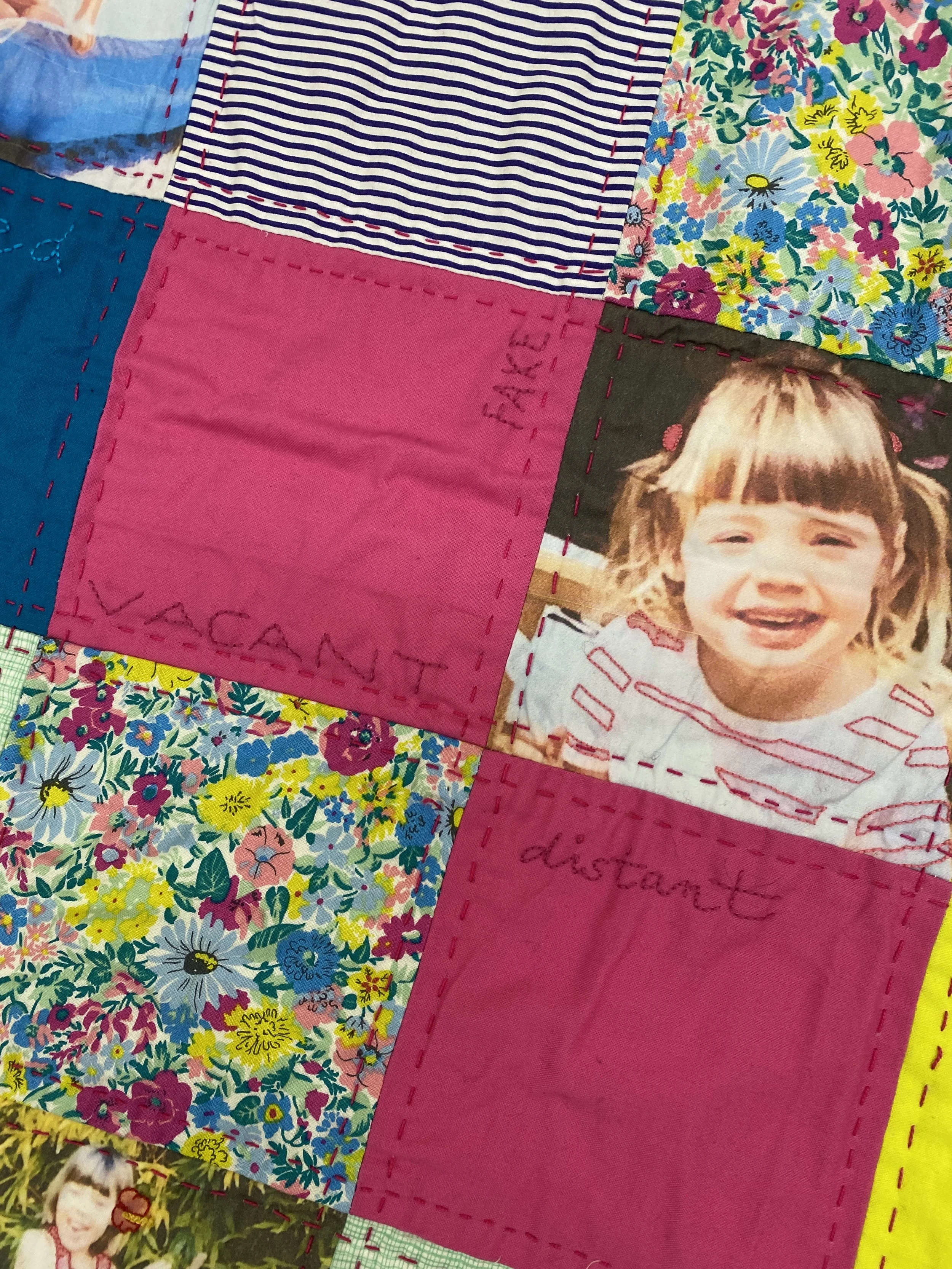PhD
Survival Memories: How representing and naming incest survival could challenge taboos, influence public discourse and ideologies, and contribute to social change through the history and tenacity of materials.
Photo: Section of my first work of my PhD.
Phd candidate (visual arts)
My research, as outlined below, explores how survivors of abuse can influence public and political discourse through art, embodiment, and materiality. My practice-led research sees me create work reflecting my trauma and challenges assumptions of safety found in domestic spaces and art forms. It is a direct challenge to patriarchal policy rhetoric and the commonly held belief that bold political statements about women’s personal and traumatic issues are only exhibited to generate controversy, rather than inform genuine social change. Survivor-led activist fine art, that focusses on art and message, rather than therapeutic outcomes, is crucial if we are going to genuinely engage in a feminist public pedagogy that can bring forward open forms of togetherness.
The research topic I am examining is “Survival Memories: How representing and naming incest survival could challenge taboos, influence public discourse and ideologies, and contribute to social change through the history and tenacity of materials”.
Discussions of gender-based trauma and sexual abuse are currently in the public consciousness; however, incest is often omitted. As one of society’s last taboos few survivors disclose or receive support, leading to significant human and social costs, highlighting the need for systemic change and research. I have firsthand experience as I developed dissociative amnesia to survive a 14-year long period of childhood parental incest.
My research provides a much-needed interrogation of depictions of incest and will contribute to feminist voices around gender-based violence and childhood sexual abuse. Incest leads to long-term impacts for female incest survivors, for example, 80 per cent of incarcerated women in Australia are incest and abuse survivors.[1]
My secondary research questions build on the broader topic and investigate:
How have, and can, artists communicate incest survival?
What is the relevance of new materialism from a feminist perspective?
How can textiles be used to contribute to political and ideological change?
Feminism is central to my practice, which adds to that of generations of women who have utilised textiles as a medium for remembering, storytelling, domestic decoration and renegade changemaking. Textiles are ever-present here in Ballarat, home of one of Australia’s most important textiles, the Eureka flag.
Methodologically I am a practice-led researcher, informed by Feminist Standpoint Theory, producing research outcomes for women, not simply about women. I interrogate relevant conceptual frameworks, focusing on feminism, trauma/incest research and new materialism. Within a visual arts context I examine the work of feminist artists and activists whose work dually documents survival, while also generating change, including, the Suffragettes, the Underground Railroad quilters, artist/survivors, along with the ‘craftivist’ movement.
Through a feminist lens, I examine how textiles can be a vehicle for remembering, memorialising, and agitating, while new materialism removes the hierarchy between artists and materials. My artistic interventions concern domestic scenes and the contradictions around home, sites of safety and comfort for many, but loci of abuse for others. Distorted images and traditional motifs, accompanied by childhood photographs, absent memories and text are captured in my textile works, evoking the tradition of embroidery samplers and quilts, methods originally used by women to develop proficiency, share stories, and generate change.
[1] Blue Knot Foundation, Facts and Figures, https://blueknot.org.au/resources/facts-and-figures/.

